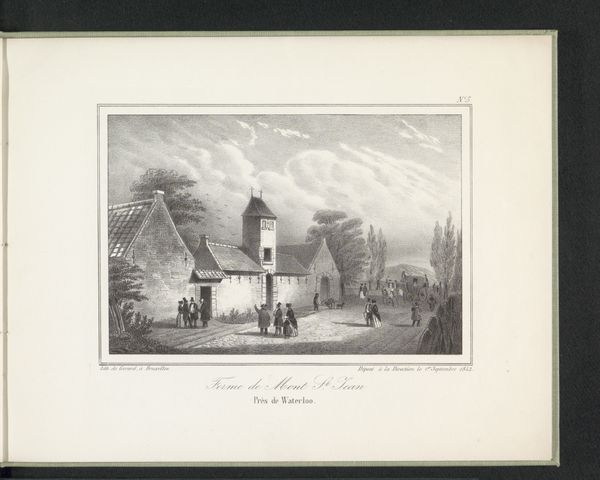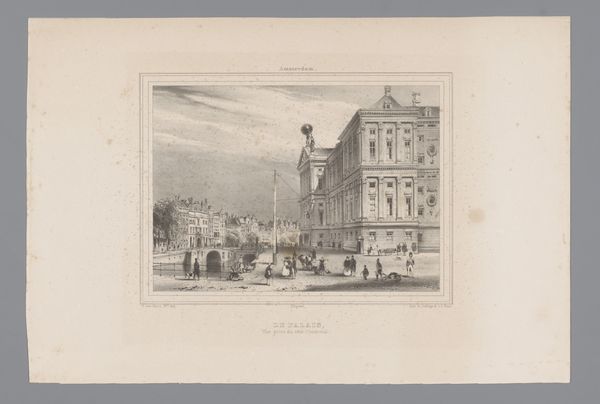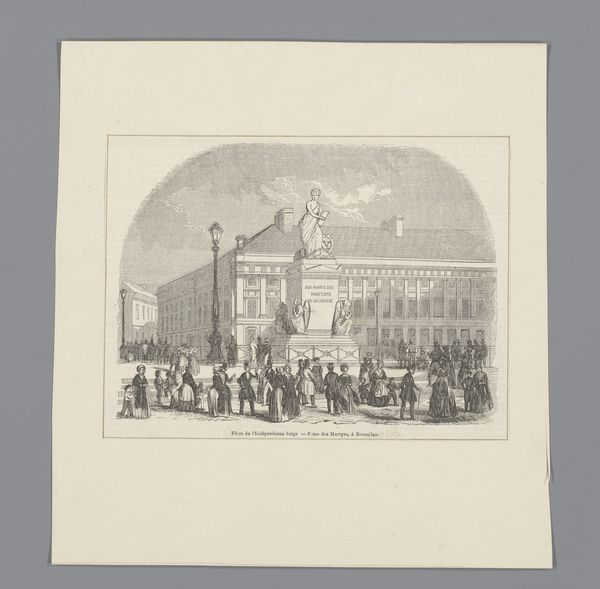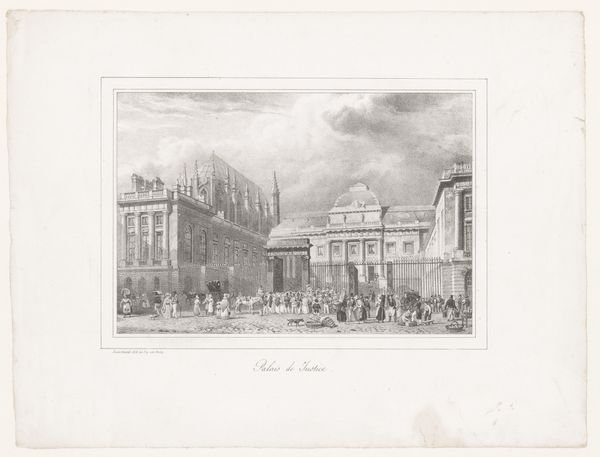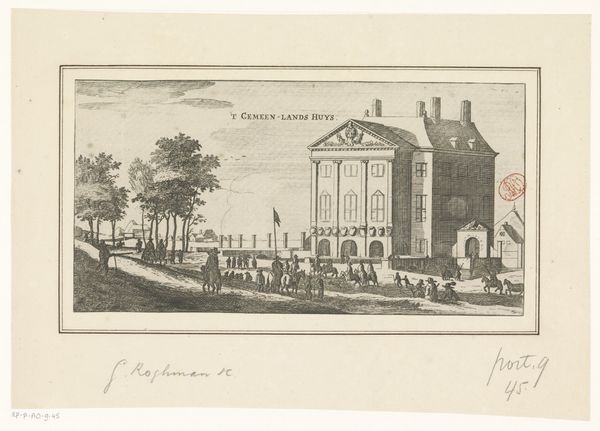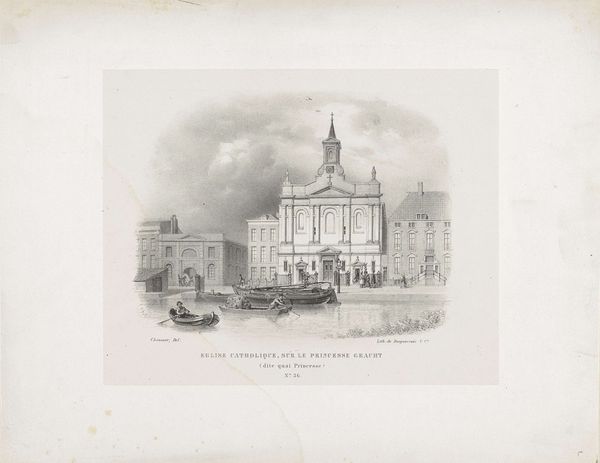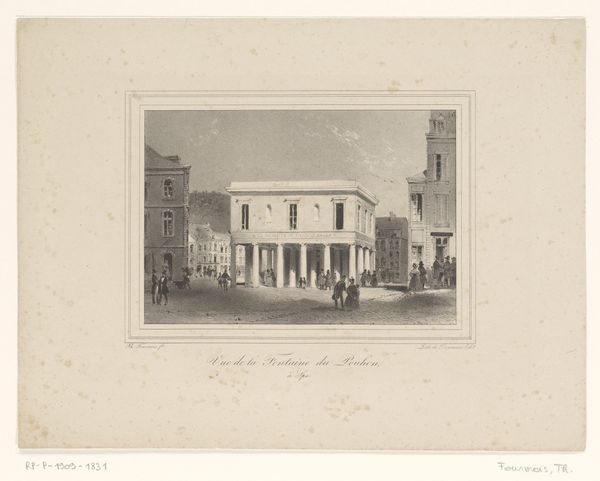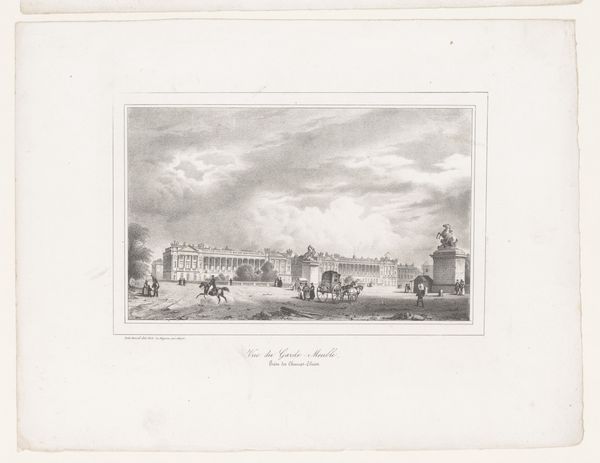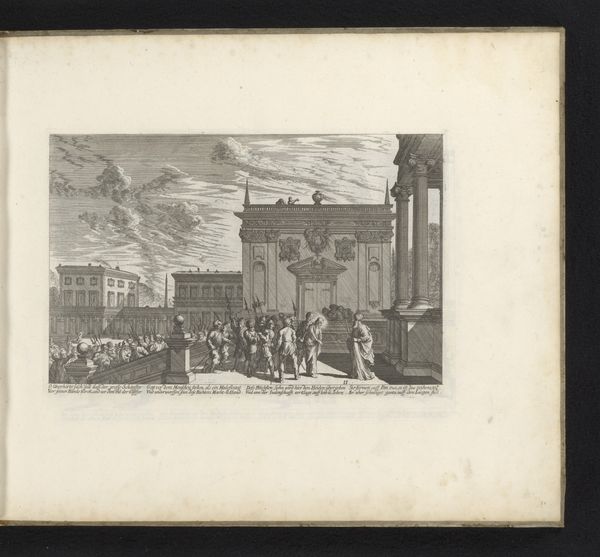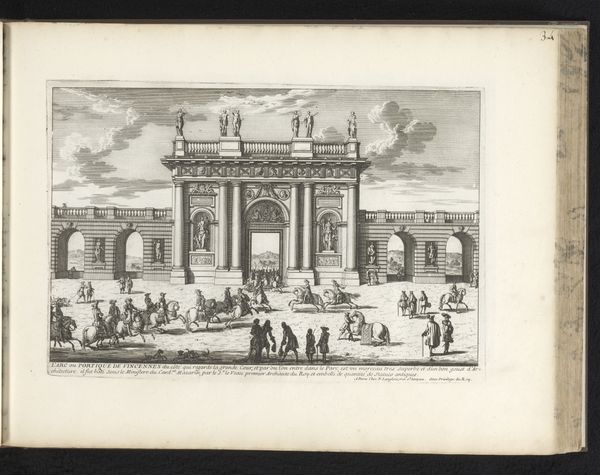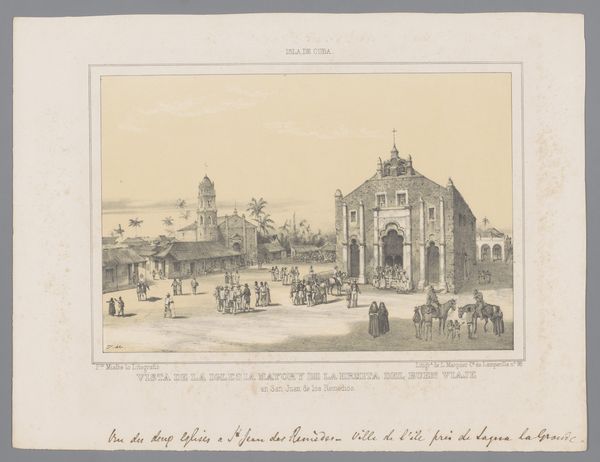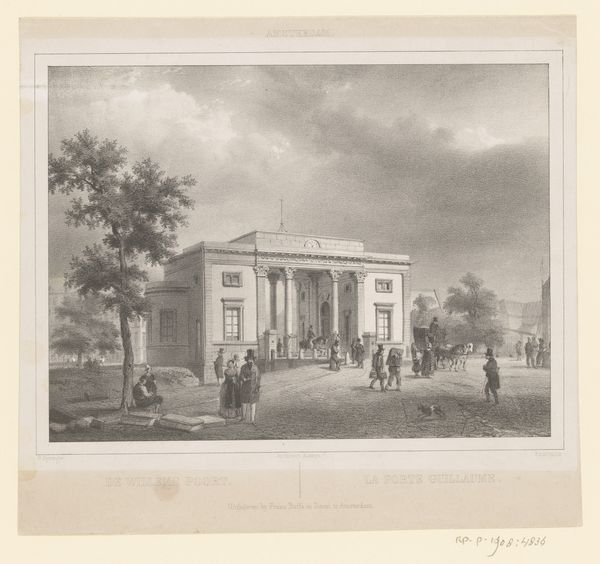
drawing, print, engraving, architecture
#
drawing
# print
#
landscape
#
romanticism
#
line
#
cityscape
#
history-painting
#
engraving
#
architecture
#
realism
Dimensions: height 225 mm, width 290 mm
Copyright: Rijks Museum: Open Domain
This print of Sint-Jozefskerk in Waterloo was made in Brussels on September 1st, 1822 by H. Gerard. In it we see the church as a focal point for the town's social life, both literally and figuratively. The image presents us with a wide street scene, where figures from different social classes mingle. A man on horseback, likely of higher status, is contrasted with the women in traditional dress, suggesting a close connection to the land and local customs. The church itself, with its prominent dome, represents not just a place of worship, but a symbol of community identity and shared values. Waterloo, of course, was the site of a famous battle in 1815. As such, we might ask how the image uses religious faith to create an idea of social cohesion and perhaps even national identity in the aftermath of conflict. To understand this print better, we might look into the history of the church, it's place in local society, and the artist's other work. Approaching it in this way we can start to appreciate art as something embedded in a specific time and place.
Comments
No comments
Be the first to comment and join the conversation on the ultimate creative platform.
